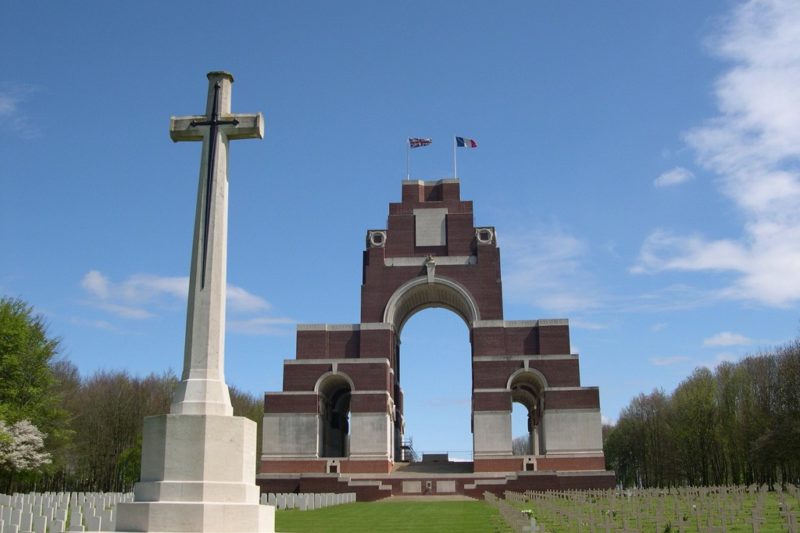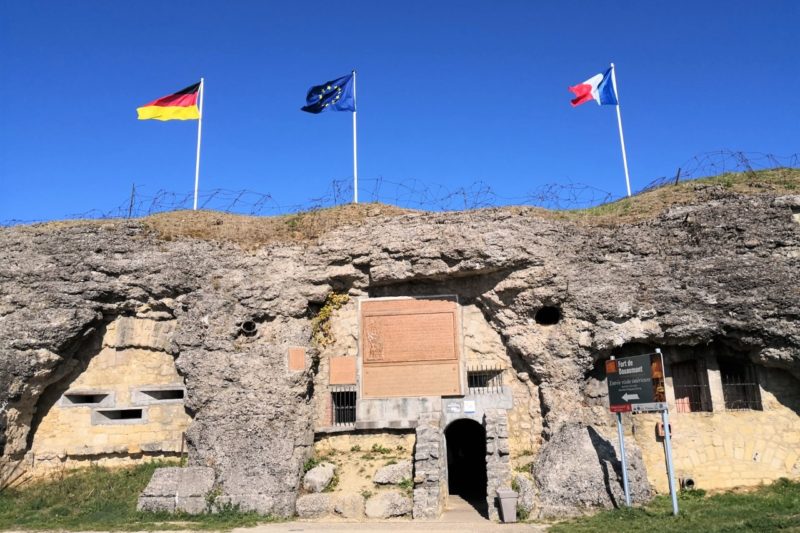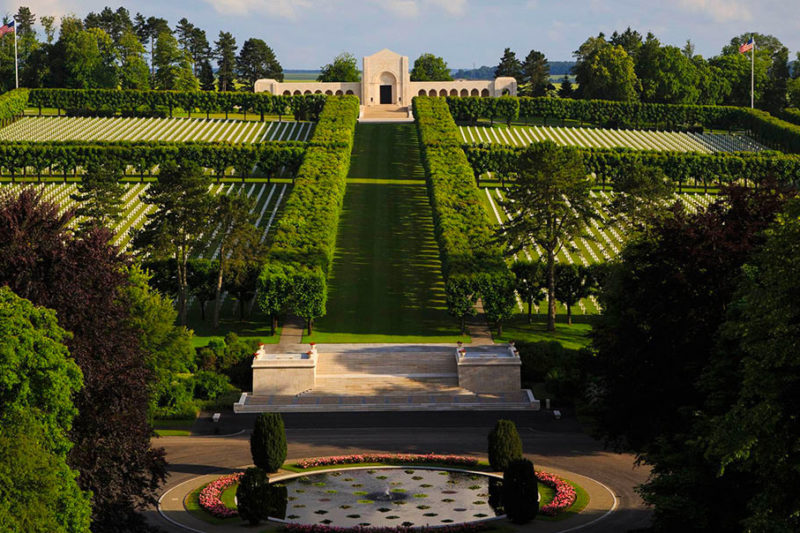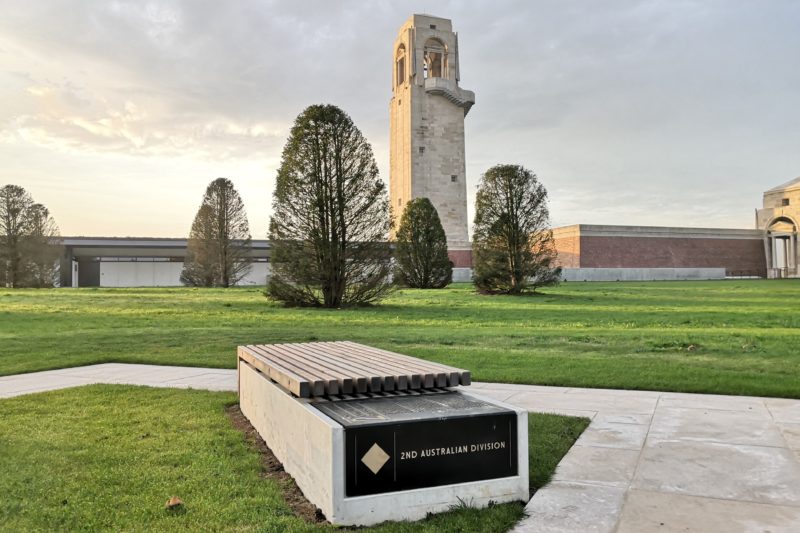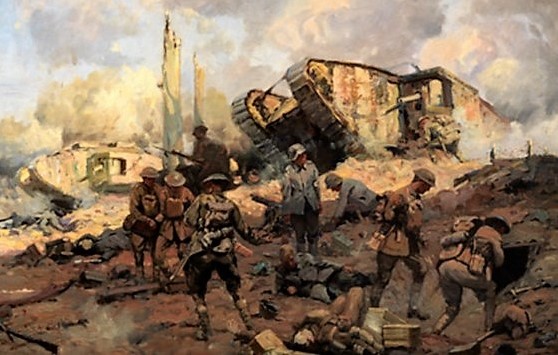Tour code : VERDUN1
Verdun 1916 and Meuse Argonne 1918
Day trip from Paris in a small group aboard a Minivan (max 7 pax)
- Information
- Tour Description
- Location
- Gallery
- Similar Tours
![]()
HIGHTLIGHTS
Aboard a minivan you will cross through the city of Verdun and discover the visibles scars (ww1 trenches, shell holes, bunkers) left by the war onto the landscapes (red zone) after the battles of 1916 and 1917.
The Douamont Ossuary building gather the skeletal remains of at least 130,000 unidentified combatants of both germans and french soldiers
Visit this impressive 19th century fortified military work “Fort Douamont” which changed hands several times during the fighting in 1916 but still houses its retractable 155mm canon under armored cupola
Be amaze to visit the new layout of the Verdun Memorial Museum which combines a learning experience and emotion, taking visitors into the heart of the Great War.
Climb up the 234 steps tower of the American Monument in Montfaucon and on top from the observation platform contemplate magnificent views towards the battlefield.
Pay your respects to the WW1 fallen soldiers while walking along the row of graves of the Meuse Argonne American Military Cemetery
THE PRICE INCLUDES
- Small group tour (Max 7 participants)
- Travel aboard an air-conditioning Minivan vehicle
- Guided sightseeing tour with English-speaking guide
- Admission tickets to Fort Douamont
- Admission tickets to The Verdun Memorial and Museum
THE PRICE DOES NOT INCLUDES
- Hotel pick-up and drop-off
- Food and drinks, unless specified
- Gratuities (optional)
- Pick up in central Paris
- STOP 1 - The Sacred Way
- STOP 2 - La Porte Chaussée in Verdun
- STOP 3 - Monument to the Dead and Children of Verdun
- STOP 4 - Douamont Ossuary
- STOP 5 - Fort Douamont
- STOP 6 - The Trench of Bayonets
- STOP 7 - MUSEUM MEMORIAL DE VERDUN CHAMPS DE BATAILLE
- STOP 8 - Montfaucon American Monument in Argonne
- STOP 9 - Meuse Argonne American WW1 Military Cemetery
- Return and drop off in central Paris
In the morning the driver guide will pick you up at 06:30 am at the following adress : LIDO DE PARIS 116 Av. des Champs-Élysées, 75008 Paris
(Easy to access by metro Line 1 and to get off at Metro station « George V »)
Located in the depths of hills around Verdun that are still pockmarked from the millions of shells which killed more than 300,000 soldiers here and wounded 400,000 in less than a year, the Verdun Memorial Museum retraces the history of the most famous battle in the First World War.
It is one of Europe’s leading First World War museums, opening in 1967 thanks to the work of a group led by Maurice Genevoix, ex-serviceman and member of the Académie française. For anybody seeking to feel, understand and pass on the true meaning of Verdun, the Memorial Museum is a “must”.
The visitor trail in the new Memorial, translated into English and German, leads right into the heart of the battlefield. Allow at least 90 minutes for the visit. The ground floor focuses on the experiences of soldiers fighting on the front line. On the first floor, visitors are shown the battlefield environment and background details on countries at war. The actual battlefield can be seen from the terraces on the top floor. Traces of the battle are still visible in the surrounding countryside.
In line with the ideas put forward by the founders of the Memorial, the replica of the 1916 battlefield remains the central feature of the visit. It is set within a glass cage and there is a video wall covering an area of 100 sq. metres. A unique audiovisual presentation recreates the violence of the battle and shows the tremors and contortions of ground constantly pounded by shellfire. It combines archival images and artwork by the soldiers. To each side are the humble, fragile everyday objects used by the men, set out in bare wooden display cases, giving visitors a different view of the battle, at eye level.
Further on, the trucks and guns on the mock-up of the Sacred Way are a reminder of the logistics of the gigantic battle, displayed against a background of engine noise and archival images. At the end of this floor, visitors enter an enclosed space beneath the battlefield screens which gives some idea of the claustrophobic surroundings of soldiers crouching in shell holes on the front line of the battle.
The second part of the day will focus to the « US Meuse Argonne Offensive » led by General of the Armies « John Pershing » (and Commander of The American Expeditionary Forces) from September 26, 1918 until the Armistice of November 11, 1918.
Impressives war memorial sites such as the «American Monument in Montfaucon » where traces of the war (ruined buildings and shell holes) are still visibles today.
The Meuse-Argonne American Memorial (Montfaucon American Monument) is an American World War I memorial commemorating "the brilliant victory of the American First Army in the Meuse-Argonne offensive.
This memorial was built by the American Battle Monuments Commission, a government agency in the USA which also maintains it.
It has an overall height of 60 metres and is topped by a statue symbolising liberty. It stands opposite the front line occupied by the First American Army on the morning of 26 September 1918 when the attack was launched.
Visitors can climb up to the observation platform (opening times are displayed outside) from which there is a magnificent view of almost all the ground captured during the offensive, the largest battle in American history at that time.
To end this very moving day and pay tribute to the Fallen soldiers, you will visit the beautiful and very well maintained « Meuse Argonne American Cemetery » which is the largest US Military Cemetery in Europe with more than 14000 graves.
WW1 American Cemetery
Within the Meuse-Argonne American Cemetery and Memorial in France, which covers 130.5 acres, rest the largest number of our military dead in Europe, a total of 14,246. Most of those buried here lost their lives during the Meuse-Argonne Offensive of World War I. The immense array of headstones rises in long regular rows upward beyond a wide central pool to the chapel that crowns the ridge.
While walking along row upon row of white grave headstones, your historian guide will share with you stories of soldiers who fought in the vicinities and then were awarded for gallantry the highest miltary decorations.
The Chapel
A beautiful bronze screen separates the chapel foyer from the interior, which is decorated with stained-glass windows portraying American unit insignia; behind the altar are flags of the principal Allied nations.
On either side of the chapel are memorial loggias. One panel of the west loggia contains a map of the Meuse-Argonne Offensive. Inscribed on the remaining panels of both loggias are Tablets of the Missing with 954 names, including those from the U.S. expedition to northern Russia in 1918-1919. Rosettes mark the names of those since recovered and identified.
Visitor Centre
A renovated, 1,600-square-foot center visitor center reopened in November 2016. Through interpretive exhibits that incorporate personal stories, photographs, films, and interactive displays, visitors will gain a better understanding of the critical importance of the Meuse-Argonne Offensive as it fits into the Great War.

